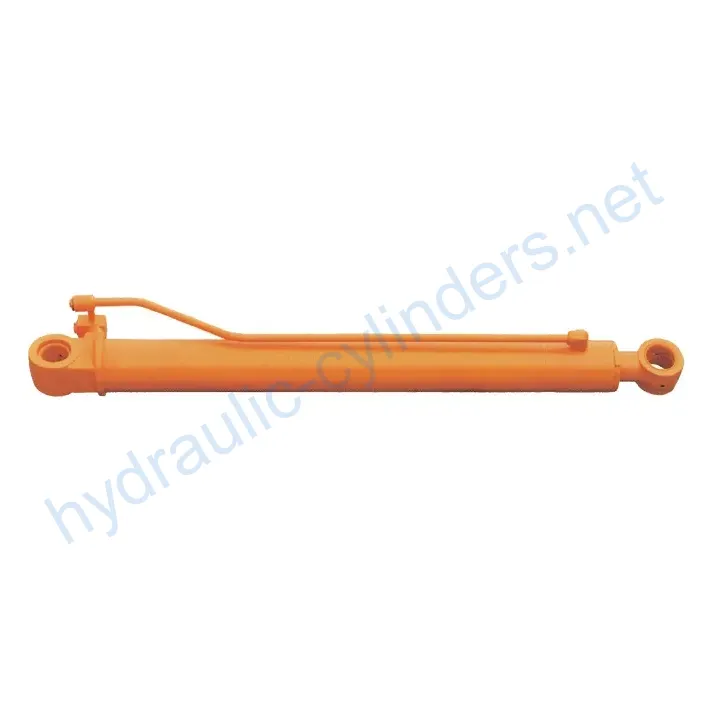Arm Cylinder For Kobelco Small Excavator SK70SR-2
Definition and Explanation
The arm cylinder is a specially designed hydraulic cylinder that provides linear motion and power to the arm of various machinery, such as excavators, cranes, and robotic arms. The arm cylinder plays a crucial role in hydraulic systems, enabling the efficient movement and control of additional tools or attachments. These cylinders not only ensure smooth motion but also withstand heavy loads, ensuring high operational efficiency and reliability in various working conditions.
Features of Arm Cylinder:
-
High Efficiency Transmission:
The arm cylinder provides powerful linear motion and force, ensuring high-performance capabilities for the mechanical arm in various operations.
-
Precise Control:
Through the hydraulic system, the arm cylinder enables precise motion control, making the operation of additional tools more flexible and accurate.
-
Strong Durability:
Arm cylinders are typically made from high-strength materials, exhibiting excellent wear and corrosion resistance, making them suitable for long-term use in harsh environments.
-
Versatile Adaptability:
These cylinders can be widely applied to various mechanical equipment, such as excavators, cranes, and robotic arms, adapting to different working requirements.
-
Easy Maintenance:
The design of the arm cylinder takes into consideration ease of maintenance and replacement, making regular inspections and maintenance more convenient and reducing equipment downtime.
Applications of Arm Cylinder:
-
Construction Engineering:
In excavators and cranes, the arm cylinder controls the movement of the bucket or boom for earthwork, material handling, and structural installation.
-
Manufacturing Industry:
In automated production lines, the arm cylinder is used for the motion of robotic arms, enabling processes such as assembly, welding, and material handling, thereby improving production efficiency and precision.
-
Agricultural Machinery:
In agricultural machinery such as harvesters and seeders, the arm cylinder controls the movement of the operating arm, performing tasks such as seeding, fertilizing, and harvesting.
-
Mining:
In mining equipment, the arm cylinder controls the arm movement of mining machinery, facilitating ore extraction and transportation.
-
Logistics and Transportation:
In forklifts and handling robots, the arm cylinder controls the lifting and movement of forks, enabling material handling and stacking.
Design Considerations and Selection Criteria:
-
Load-Bearing Capacity:
The arm cylinder design considers the ability to bear the specified load to ensure safe and efficient operation.
-
Sealing:
Various sealing components, such as piston seals and rod seals, are used, selecting wear-resistant materials like polyurethane and nitrile rubber. The cylinder body and threaded ends are finely treated to improve wear resistance. Regular lubrication with hydraulic oil is necessary for proper lubrication.
-
Durability:
The arm cylinder is built to be durable, using high-quality materials and coatings to withstand harsh operating conditions.
-
Safety:
Safety features are incorporated into the arm cylinder design to prevent accidents and ensure operator protection.
-
Maintainability:
The design allows for easy maintenance and replacement, reducing downtime and ensuring smooth operation.
Regular Inspection and Preventive Maintenance Measures:
-
Regularly inspect the arm cylinder for any signs of wear, leaks, or damage.
-
Check and replace worn-out seals and other components as needed.
-
Ensure proper lubrication by adding an adequate amount of hydraulic oil at regular intervals.
-
Tighten any loose bolts or connections.
-
Follow manufacturer’s guidelines for maintenance and schedule preventive maintenance tasks accordingly.
Proper Installation Guide:
To install the arm cylinder correctly, follow these steps:
-
Ensure the excavator is turned off and parked on a level surface.
-
Remove any debris or obstructions around the arm cylinder mounting area.
-
Attach the arm cylinder to the designated mounting points, following the excavator’s manufacturer instructions.
-
Tighten all bolts and connections to the specified torque.
-
Check for proper alignment and freedom of movement.
-
Test the arm cylinder’s functionality before operating the excavator.
Safety Considerations and Environmental Factors:
When using arm cylinders, it is important to implement safety measures to ensure the well-being of operators and prevent accidents. Safety precautions may include:
-
Providing proper training to operators on arm cylinder operation and safety protocols.
-
Using appropriate personal protective equipment (PPE) such as gloves and safety glasses.
-
Regularly inspecting the arm cylinder for any signs of wear, damage, or leaks.
-
Adhering to all relevant safety regulations and standards.
Common Fault Diagnosis and Troubleshooting:
-
Issue: Leakage
Possible Causes:
- Worn-out seals
- Damaged cylinder body
- Loose connections
Solution:
- Replace worn-out seals
- Repair or replace the damaged cylinder body
- Tighten loose connections
-
Issue: Insufficient Power
Possible Causes:
- Low hydraulic oil level
- Contaminated hydraulic oil
- Internal cylinder damage
Solution:
- Refill hydraulic oil to the recommended level
- Drain and replace contaminated hydraulic oil
- Repair or replace the damaged internal components
-
Issue: Abnormal Noise
Possible Causes:
- Mis
- Mis

